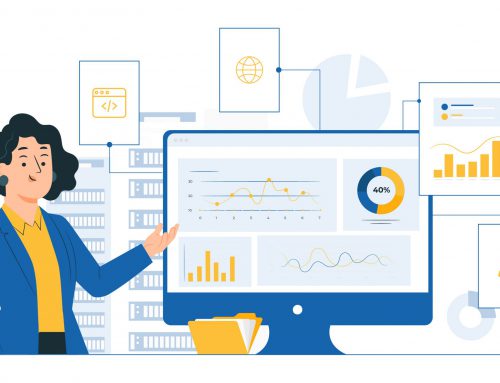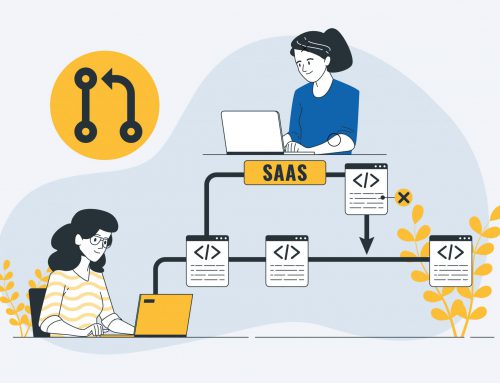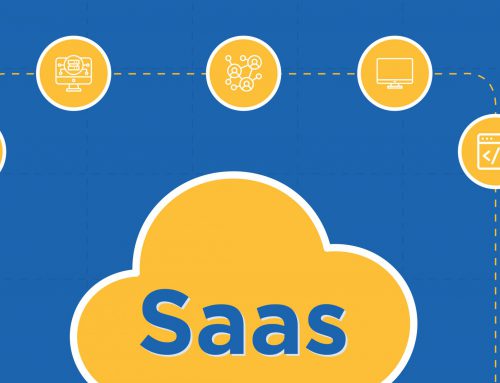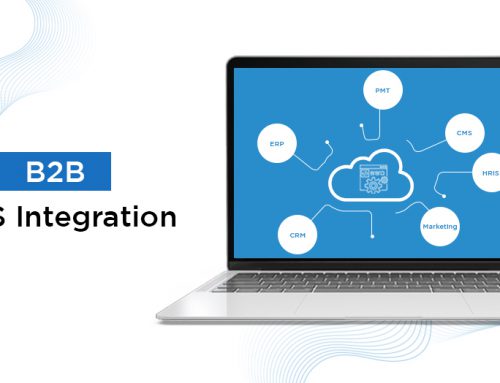Table of Contents
AI is revolutionizing every aspect of business operations, including software development, where machine learning techniques not only speed up the traditional software development lifecycle (SDLC) but also introduce an entirely novel approach to technological innovation.
A survey revealed that a staggering 87% of global organizations firmly believe that AI technologies will provide them with a crucial competitive edge in the relentless race for market dominance. This overwhelming vote of confidence underscores the widespread recognition of AI’s transformative capabilities within the software business landscape.
Let us dissect this profound influence of AI, delving into key dimensions where it remarkably refines the very essence of software creation and deployment.

Remote Team Management Proven Strategies for 2024
Get your free copy
7 Ways AI Refines Software Development Process
The transformative power of artificial intelligence illuminates 7 pivotal benefits to refine the software development process.
- Augmenting Efficiency Through AI’s Integration
- Elevating Code Quality by AI’s Precision
- Amplifying Productivity with AI’s Assistance
- Unveiling Predictive Insights by AI’s Analysis
- Realizing Scalability with AI’s Versatility
- Personalizing User Experiences by AI’s Insight
- Gaining Competitive Advantage Through AI Innovation
1) Augmenting Efficiency Through AI’s Integration
Efficiency holds great significance in software development, and with the emergence of AI technologies, achieving it has become more attainable than ever before.
Did you know?
88% of marketers say they need to increase the use of automation and AI to meet customer expectations and stay competitive. – Mailchimp
Here’s how AI achieves enhanced efficiency in software development:
| How It Works | The Benefit It Brings |
|---|---|
| Automation of Repetitive Tasks | – Cost savings through reduced manual effort. – Reduction in human errors, ensuring code quality. – Consistent application of coding standards. |
| Focus on Higher-Value Activities | – Boosting team morale by reducing tedious work. – Fostering a culture of innovation and creativity. – Enabling cross-functional collaboration. |
| Acceleration of Software Lifecycle | – Improved test coverage and reliability. – Integration with continuous integration/continuous deployment (CI/CD) pipelines. – Enhancing overall development speed. |
| Faster Time-to-Market | – Adapting quickly to industry trends and customer demands. – Facilitating faster iterations and updates. – Gaining a first-mover advantage in the market. |
| Increased Agility | – Enhanced responsiveness to changing project requirements. – Facilitation of Agile and DevOps methodologies. – Seamless integration with evolving technologies. |
Strategies for Implementing AI-Augmented Solutions in Your Business
- Define your requirements and pinpoint areas suitable for AI integration.
- Explore various AI tools and platforms, selecting the most suitable ones for your needs.
- Foster collaboration among your development team to smoothly incorporate the chosen AI tool into your workflow.
- Offer comprehensive training and support to ensure your developers are adept at leveraging the capabilities of the AI tools for optimal outcomes.
- Continuously evaluate the performance and influence of the AI tool on your software development processes, iterating and enhancing results as needed.
2) Elevating Code Quality by AI’s Precision
The significance of code quality in software development cannot be overstated. With the advent of emerging AI technologies, meeting the market demand for maintaining superior code quality has become more achievable than ever before.
Did you know?
About 69.20% of the software industry, recognized that their client’s software demands are AI-powered. – Goodfirms
Here’s how AI contributes to improved code quality:
| How It Works | The Benefit It Brings |
|---|---|
| Advanced Error Detection | – Sophisticated algorithms analyze codebases. – Identifies potential errors, bugs, and vulnerabilities. |
| Vulnerability Identification | – AI algorithms recognize common security vulnerabilities. – Detects risky coding practices. |
| Inefficiency Detection | – Identifies inefficiencies and suboptimal coding practices. – Impacts performance, scalability, and maintainability. |
| Early Issue Identification | – AI-driven code analysis detects issues early. – Provides real-time feedback to developers during coding. |
| Continuous Monitoring | – AI-powered tools continuously monitor code repositories. – Detect changes and potential regressions. – Ensures ongoing code quality. |
| Facilitates Code Review | – AI-driven code analysis tools automatically identify issues. – Suggest solutions to enhance the code review process. |
| Improved Software Reliability | – Early identification and resolution of errors, vulnerabilities, and inefficiencies. – Contributes to improved software reliability. |
Tips For Succeeding With AI-Assisted Coding
- Set realistic expectations
- Make code quality a KPI
- Conduct continuous code inspections
- Recognize the growing significance of comprehending code
- Allocate time for ongoing learning
3) Amplifying Productivity with AI’s Assistance
Productivity is a key factor in software development, as it directly impacts the speed and efficiency with which software solutions are delivered. AI facilitates continuous integration and continuous delivery (CI/CD) practices by seamlessly integrating testing into the software development pipeline.
Did you know?
Existing AI technologies can automate tasks that absorb between 60% and 70% of workers’ time today. – McKinsey
Here’s how AI contributes to enhanced productivity among development teams:
| How It Works | The Benefit It Brings |
|---|---|
| Automated Testing | – Identify patterns in test data to prioritize test cases – Optimize testing scenarios |
| Efficient Debugging | – Identify and diagnose issues automatically – Accelerates issue resolution and minimizes downtime – Enable developers to maintain momentum and productivity |
| Automated Documentation | – Frees up developers’ time and ensures comprehensiveness – Makes Project documentation accessible for stakeholders |
| Time Savings | -Saving developers significant time used in testing & debugging |
| Improved Collaboration | – Enable real-time collaboration, version control, and feedback exchange. – Fosters a culture of teamwork and transparency – Enhance productivity and efficiency |
Strategies that will increase productivity:
- Identify bottlenecks
- Develop test scripts and scenarios.
- Implement logging and error-tracking mechanisms.
- Select suitable documentation generation tools.
- Streamline workflows and eliminate unnecessary steps.
4) Unveiling Predictive Insights by AI’s Analysis
Predictive insights, facilitated by artificial intelligence (AI) and data analytics, are instrumental in helping organizations in many ways.
Did you know?
Almost half (48%) of organizations say they use data analysis, machine learning, or AI tools to address data quality issues. – o’Reilly
Here’s how AI leverages data analytics to provide predictive insights:
| How It Works | The Benefit It Brings |
|---|---|
| Data Analysis and Collection | – AI algorithms gather and analyze vast amounts of data related to software performance metrics, user behavior patterns, and market trends |
| Pattern Recognition | – Recognize correlations within complex datasets. – Uncover insights not apparent through manual analysis alone. |
| Trend Identification | – Identify anomalies within the data. – Detect changes in user behavior, shifts in market demand, and emerging technologies. |
| Predictive Modeling | – Predict future software requirements, user preferences, and market dynamics |
| Anticipating Future Requirements | – Understand demands based on historical data and trends. – Prepare for emerging trends in the industry. |
| Informed Decision-Making | – Decide on resource allocation, product development strategies, and market positioning |
Tips to implement predictive analysis:
- Process and clean data efficiently
- Use machine learning algorithms for recognition
- Evaluate and refine models regularly
- Analyze historical data using time-series techniques
- Train models on historical data
- Conduct market research
- Integrate analytics into decisions
5) Realizing Scalability with AI’s Versatility
Scalability in software development refers to the ability of a system or application to handle increasing workloads, users, and data volumes without sacrificing performance or user experience.
Did you know?
One-fifth of all industries use artificial intelligence across service operations and corporate finance. – Statista
Here’s how AI contributes to scalability:
| How It Works | The Benefit It Brings |
|---|---|
| Dynamic Resource Allocation | – Allocate computing power, storage, and network bandwidth based on real-time demand |
| Automated Infrastructure Management | – Scale, and optimize infrastructure resources in response to changing workloads |
| Load Balancing | – Distribute incoming requests and workloads to prevent bottlenecks – Ensure optimal performance |
| Horizontal and Vertical Scaling | – Accommodate increased demand based on performance requirements and resource availability |
| Fault Tolerance and Resilience | – Continuously monitor system health and detect anomalies – Ensure fault tolerance and resilience. |
| Optimized Performance and User Experience | – Deliver consistent performance and responsiveness to users under varying conditions |
Strategies to help increase scalability
- Adopt AI for infrastructure-as-code
- Optimize load distribution with ML models
- Employ AI cloud-native scaling
- Test resilience with AI-driven chaos engineering
- Employ AI CDNs for content optimization
6) Personalizing User Experiences by AI’s Insight
These are tailored interactions, content, and recommendations delivered to individual users based on their preferences, behaviors, and past interactions with a software product or service. Artificial intelligence (AI) plays a pivotal role in analyzing user data and delivering personalized experiences that enhance engagement, satisfaction, and loyalty.
Did you know?
53% of Customers believe AI will help companies offer better customer service. – Salesforce
Here’s how AI facilitates personalized user experiences:
| How It Works | The Benefit It Brings |
|---|---|
| User Data Analysis | – Identify insights on individual users’ preferences, interests, and needs |
| Behavioral Analysis | – Examine user engagement patterns across various touchpoints |
| Preference Modeling | – Construct personalized user profiles for tailored experiences |
| Content Personalization | – Deliver content, products, and services based on users’ preferences and past behavior |
| Relevant Recommendation | – Strengthen user satisfaction and loyalty – Foster increased advocacy among users |
Tips to utilize AI for personalized user experience
- Consider utilizing cloud-based services and data management platforms
- Plan and execute seamless integration with existing systems and applications
- Implement standardized APIs and protocols for interoperability across different platforms
- Evaluate and allocate sufficient computational resources, including CPU, GPU, and memory
7) Gaining Competitive Advantage Through AI Innovation
In the fiercely competitive landscape of the software development industry, gaining a competitive advantage is crucial for organizations to thrive and succeed in the marketplace.
Did you know?
Over 80% of Fortune 500 companies had already adopted ChatGPT within their business by August 2023. – OpenAI
Here’s how AI enables organizations to achieve and maintain a competitive advantage:
| How It Works | The Benefit It Brings |
|---|---|
| Rapid Innovation | – Fosters a culture of experimentation and innovation |
| Differentiated Products and Services | -Enhance value proposition |
| Agile Processing | – Streamlines workflows |
| Set New Standards | – Establish your business as a market leader |
The best way to get it done
- Provide training and upskilling opportunities for development teams to familiarize themselves with AI concepts, tools, and best practices.
- Offer workshops, courses, and certifications to empower developers to leverage AI effectively in their day-to-day work.
Conclusion
Take advantage of AI to streamline your workflows, optimize your processes, and unlock new growth opportunities. Whether you’re a startup or an enterprise, integrate AI into your software development practices to revolutionize the way you work and propel your projects to new heights of success.
Let your journey begin now – embrace AI, explore its capabilities, and embark on a path of innovation and excellence in software development. The future is bright, and with AI by your side, the possibilities are limitless.
Reach out to us to schedule a consultation and discover how we can help you leverage AI to drive your business forward.

























